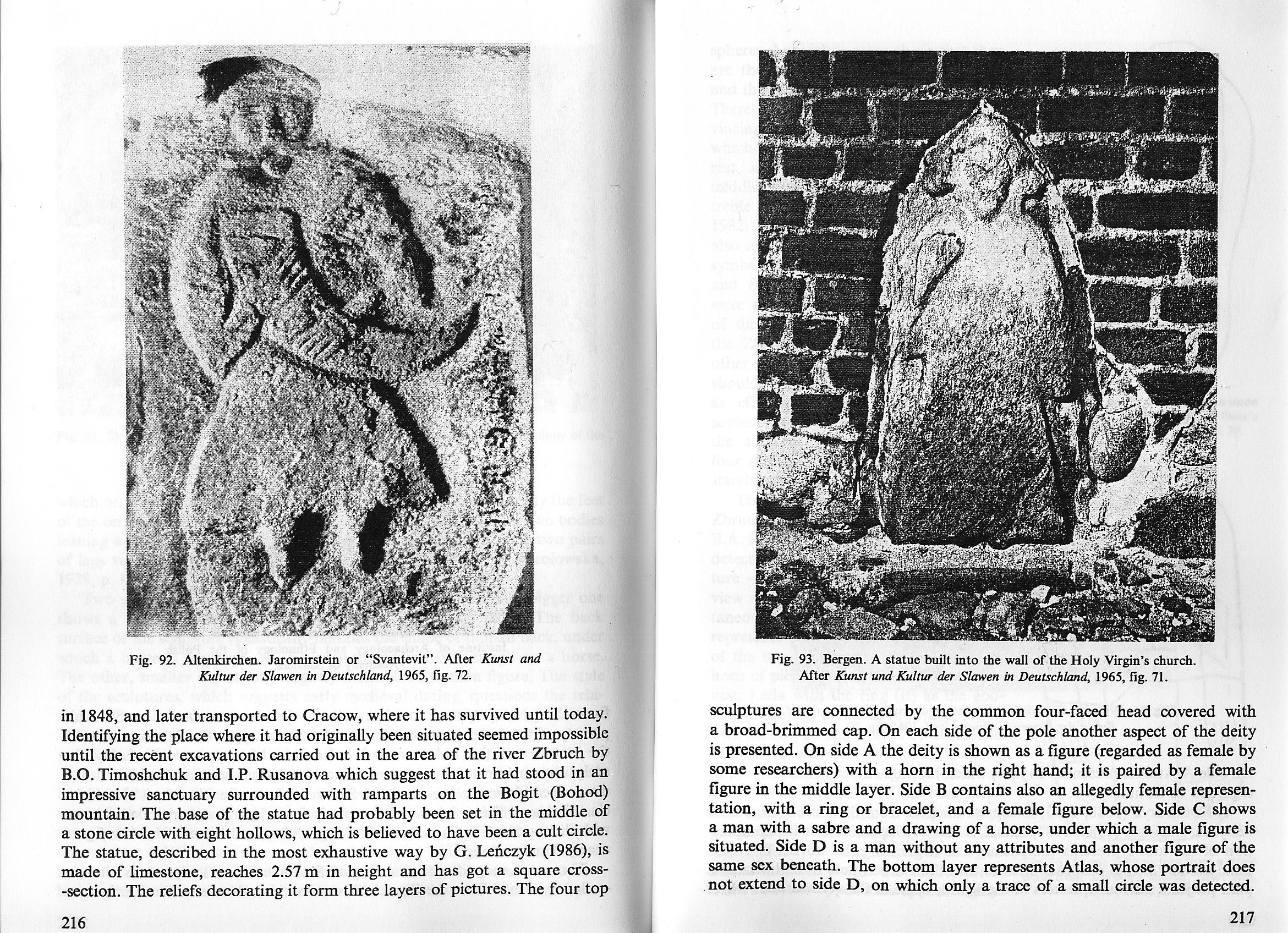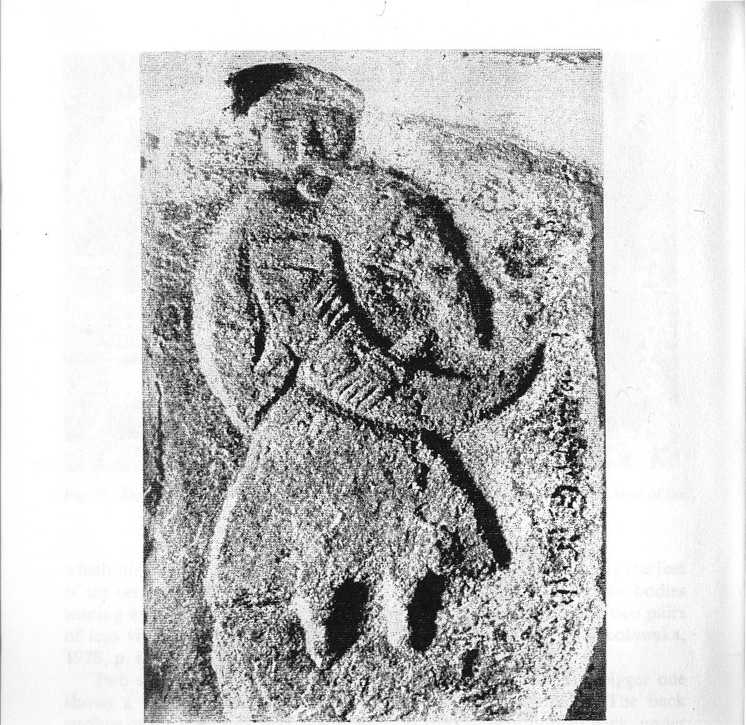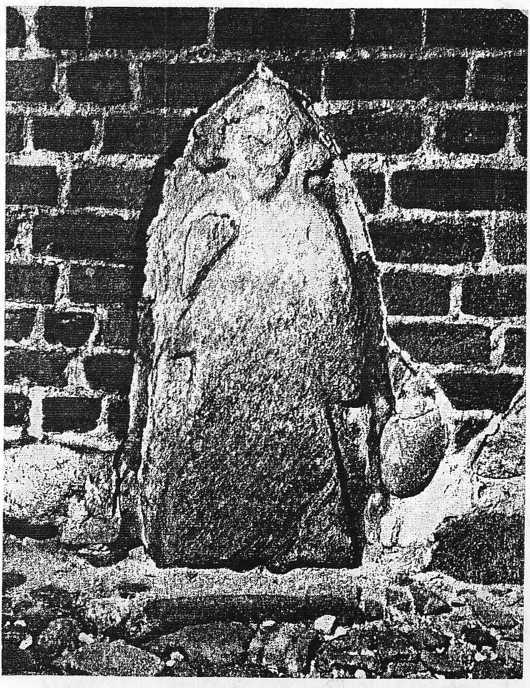48770 image107 (8)


Fig. 92. Altenkirchen. Jaromirstein or “Svantevit”. After Kunst and Kultur der Slawen in Deutschland, 1965, fig. 72.
in 1848, and later transported to Cracow, where it has survived until today. Identifying the place where it had originally been situated seemed impossible until the recent excavations carried out in the area of the river Zbruch by B.O. Timoshchuk and I.P. Rusanova which suggest that it had stood in an impressive sanctuary surrounded with ramparts on the Bogit (Bohod) mountain. The base of the statuę had probably been set in the middle of a stone drcle with eight hollows, which is believed to have been a cult circle. The statuę, described in the most exhaustive way by G. Leńczyk (1986), is madę of limestone, reaches 2.57 m in height and has got a sąuare cross--section. The reliefs decorating it form three layers of pictures. The four top

Fig. 93. Bergen. A statuę built into the wali of the Holy Virgin’s church. After Kunst und Kultur der Slawen in Deutschland, 1965, fig. 71.
sculptures are connected by the common four-faced head covered with a broad-brimmed cap. On each side of the pole another aspect of the deity is presented. On side A the deity is shown as a figurę (regarded as female by some researchers) with a horn in the right hand; it is paired by a female figurę in the middle layer. Side B contains also an allegedly female represen-tation, with a ring or bracelet, and a female figurę below. Side C shows a man with a sabre and a drawing of a horse, under which a małe figurę is situated. Side D is a man without any attributes and another figurę of the same sex beneath. The bottom layer represents Atlas, whose portrait does not extend to side D, on which only a tracę of a smali circle was detected.
217
Wyszukiwarka
Podobne podstrony:
89788 image108 (8) Fig. 94. Wolgast. Gerovitstein. St Peter’s church. After Kunst und Kultur der Sla
slide0586 image198 CATIA P2 Select a point or click to define the center EJ
Image1 (89) ^ I 92 Rozwiązania zadań ze zbioru "MENDLA W obu przemianach zmianie objętości nie
image102 Fig. 82. Fischerinsel. The female figurę, a - the front view, b - the side view. After E. G
image103 O 10 cm Fig. 84. A carved plank from Ralswiek. After J. Hernnann,&nb
image104 Fig. 86. Jankowo. a: The location (after W. Hensel, 1953, p. 188). b: A wooden sculpture of
image105 Fig. 88. Sculptures from Braak near Eutin. Afler H. Jankuhn, 1957, table 7. i of her (Gieys
image106 Fig. 90. Ślęża. “The Boar”. The archives of the Institute of Archaeology and Ethnology of t
image107 Fig. 102. The idols from Stavchany and the place where they were found. a - stones; b - bur
image108 Fig. 104. Sviatovid frora Zbruch. Aft er A. Gieysztor, 1982, p. 94. from Altfriesack, Fisch
56987 image109 (8) Fig. 97. The rock frora Leźno, presently in Archeological Museum in Gdańsk. Left:
więcej podobnych podstron